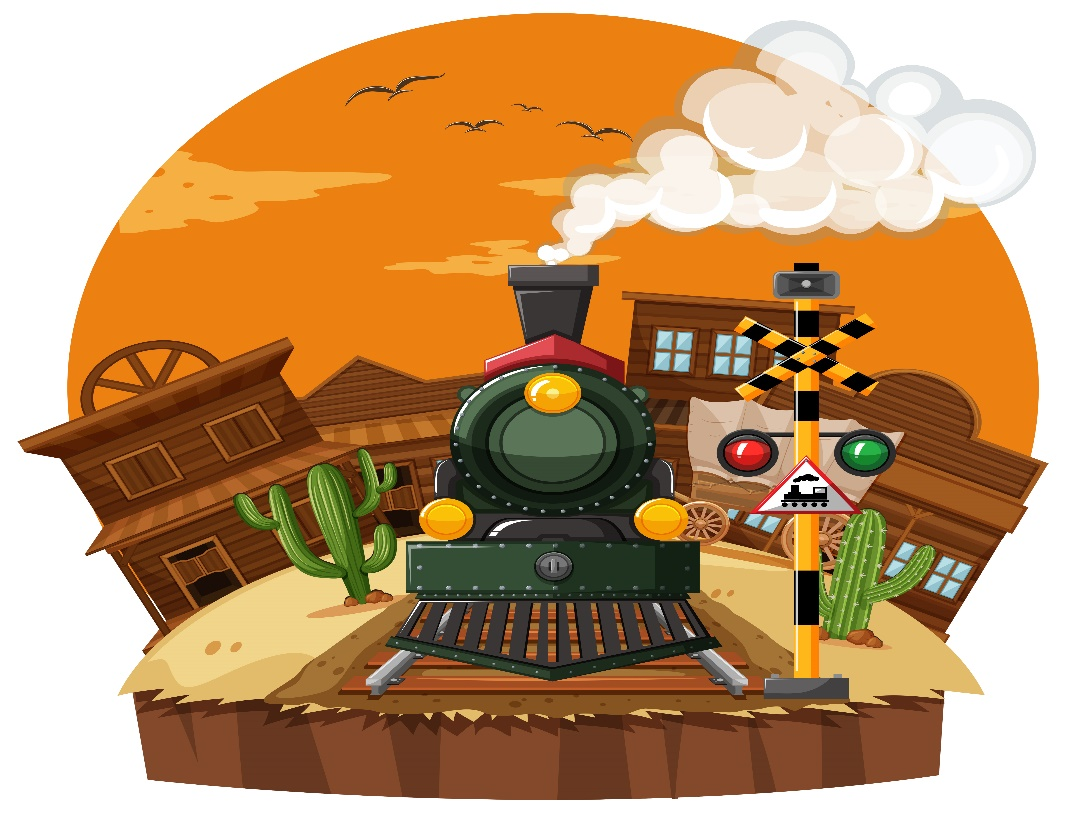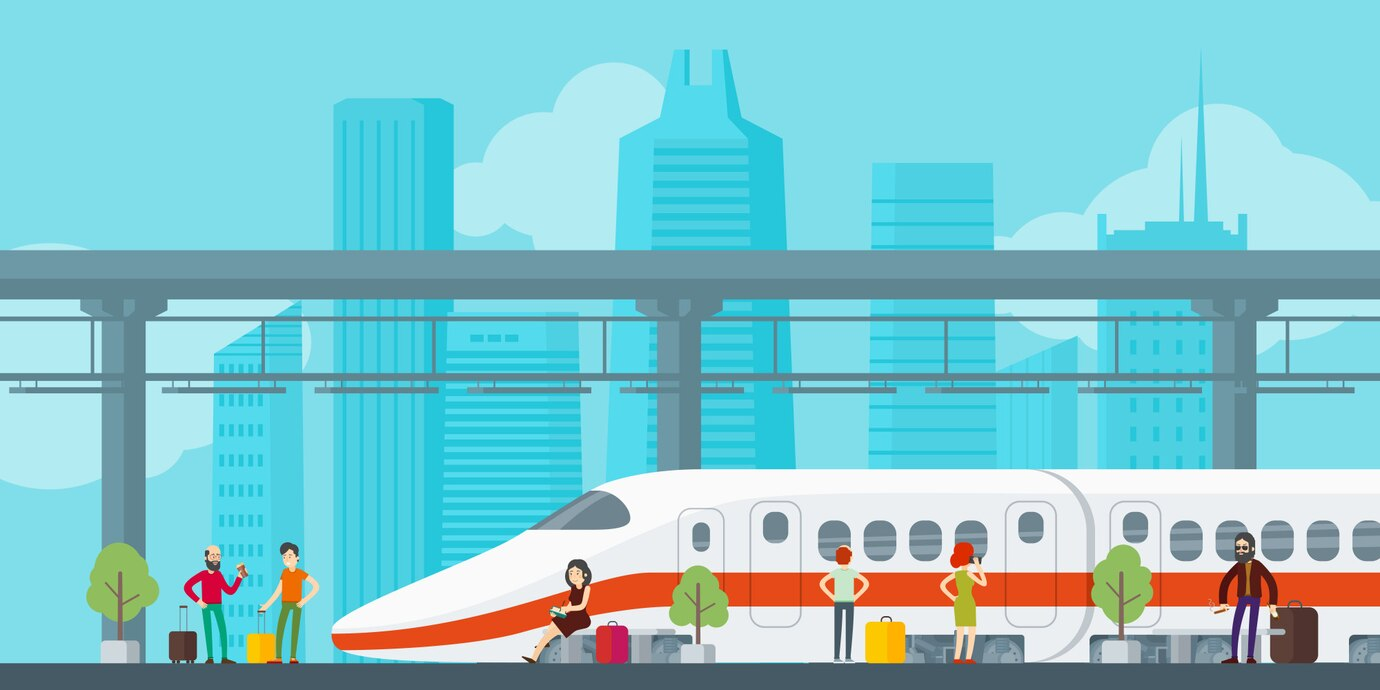Rail transportation
Rail transportation plays a fundamental role in the movement of passengers and freight across vast distances, connecting cities, regions, and even countries.
The modern railway system emerged during the Industrial Revolution in the 18th and 19th centuries.

Photo source: Freepik
Types of Rail Transportation
- Passenger Rail - transport people
- Freight Rail - transport raw materials, finished products, and bulk cargo.
- Specialized Rail Services - intermodal transportation (combining rail and other modes such as trucks and ships), heavy-haul rail for transporting oversized loads, or tourist or heritage railways

Photo source: Freepik
Traveling by train is a great opportunity to see the countryside of Europe from the window, without being bothered by navigation issues. However, not all of the European countries are connected by trains to the same extent. Not all of Europe offers the best train services.
In Western Europe, anyone can travel to almost every single destination by train. Eurail global pass is just an example of a good opportunity to save if travelling across several countries at a fast pace. In some other cases, there is an opportunity for a regional pass. It is called ”Discover EU”. The Benelux pass is valid to travel between Belgium, The Netherlands & Luxemburg.
In central Europe, the trains are still very reliable, clean and efficient. Cities like Prague, Vienna, and Budapest are extremely well connected. They offer plenty of departures each day.
In Eastern Europe train travel becomes more difficult. Cross-border trains are slowed down by customs procedures, if the countries are outside the Schengen area, or even outside the EU. And, in some cases, secondary routes are abandoned, and the trains frequency and operating speed is very low.
Each country has its system of discounts for youngsters, seniors, children or other categories of travellers. In many European countries, young people below 26 years old are offered discounts for train tickets. In other countries, students have the right to travel at reduced prices. There are significant facilities for commuters or seniors.
Governments must invest in modernization of the rail passenger transport, including speed, travel conditions, train stations, connecting pathways, and modern reservation systems.

Photo source: Wikimedia Commons
What are challenges and opportunities of transitioning to sustainable energy sources in rail transportation?
Challenges :
- Modernizing existing infrastructure or adjusting it to renewable energy sources needs a lot of money;
- In the railway sector, hydrogen fuel cells and battery electric propulsion are still in the early stages of development
- National regulations, incoherent policies and lack of vision can delay the use of green energy in this sector
- Costs of moving to green technologies can be prohibitive for rail operators, especially in regions where fossil fuels remain relatively cheap.
Opportunities:
- Environmental benefits: sustainable energy sources can significantly reduce greenhouse gas emissions, air pollution, and reliance on finite fossil fuels.
- Reduced energy consumption and operating costs over the long term.
- Possibility of transporting bulky goods, especially using intermodal transport
- High standards of safety – reduced number of accidents, also reduced crime frequency (theft, vandalism)
- Technological innovation: sustainable energy technologies bring innovation and technological advancements to the rail industry.

Photo source: Freepik
What modern ways of train transport exist?
Rail transportation is a very efficient way of commuting for employees, students, visitors, senior citizens or young people, who can benefit from the discounted prices. There are also facilities to transport classic and e-bikes, scooters or reduced mobility passengers. High-speed trains (TGV, Eurostar, Freccia Rosa, AVE, others) offer fast connections between cities situated at 1000 km distance (or even more). Also, the waiting times for boarding and security checks are lower, compared with flights. In addition to that, train stations are often in central areas of the cities, with good public transport connections.
Example: Thalys is an international high-speed train operator originally built around the LGV Nord high-speed line between Paris and Brussels. This track is shared with both Eurostar trains, which go from Paris or Brussels to London and with French domestic TGV trains. Thalys reaches Amsterdam and Cologne, and its system is operated by Thalys International. Journeys from Brussels (Brussels-South) to Paris (Gare du Nord) are normally 1 hour, and 22 minutes, for a distance of approximately 300 kilometres. Peak speed is 320 km/h

Photo source: Flickr
Urban trains are often connected with the public urban transport system. They are oriented to connecting people, living in suburbs, to the main interest areas of the big cities. Of special importance are the train lines, which were built to connect the airports with the city train stations. They carry hundreds of thousands of passengers to/from their flights, bringing them to city centres cheaply and reliably.

Photo source: Pexels
What about freight?
Freight traffic is the main transportation means for heavy products, such as steel, grains, oil products, coal and iron ores, timber and others. The containers are very easy to use, even on trains. With well-targeted state subsidies and a good navigation management system (one that could avoid delays), the costs of transport are considerably lower using railroads than auto vehicles.
The EU has also established a rail network giving priority to freight, through the realisation of several international freight-oriented “corridors”.
The transport of containers, i.e. one of the types of rail transport, is commonly used in intermodal shipping, often referred to as combined or multimodal transport. This form of transport service is extremely cost-effective and reduces the environmental impact of road freight.
An example of intermodal transport using the railways is when a container with goods is delivered to a port by sea and then by train to a warehouse in the centre of the country. From there, the cargo is transported by lorry to the final collection point. The same loaded container is used for the entire route, which significantly reduces the time and cost of the service.

Photo source: Flickr
Rail transportation is a cornerstone of modern transportation infrastructure, offering efficient, sustainable and reliable mobility solutions for passengers and freight alike. Its historical significance, technological innovations, and widespread impact on global connectivity make it an essential component of the modern world.
